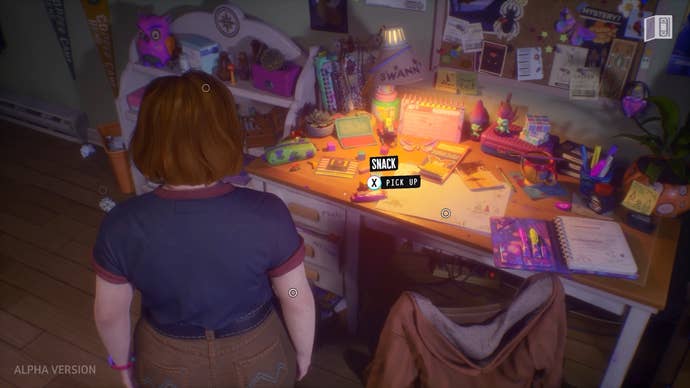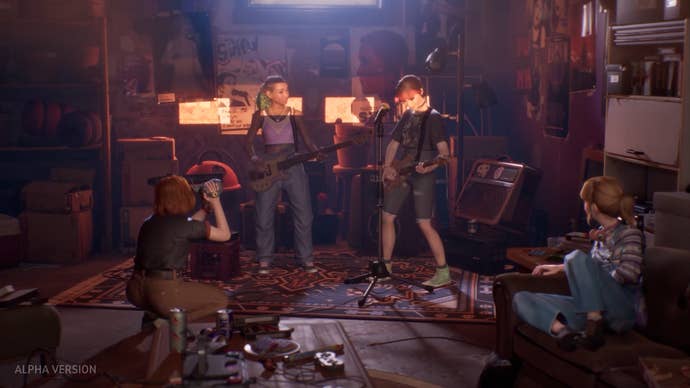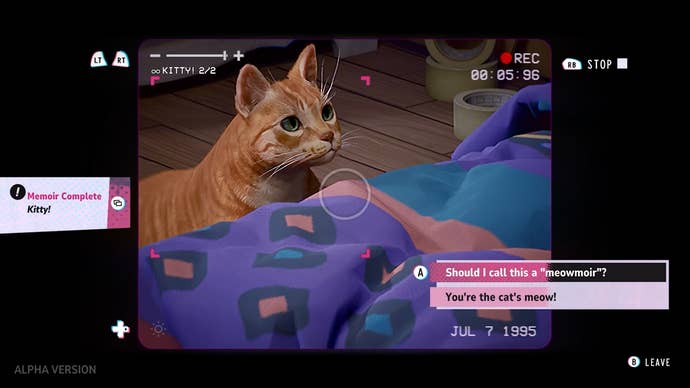Lost Records: Bloom & Rage places Dontnod in the odd position of being its own strongest competitor - hands-on preview
A life by any other name would be as strange.
I usually hate to lean heavily on comparisons to another game when talking about a stand-alone title, especially one developed and published by an independent studio. But really, there's no way to talk about Lost Records: Bloom & Rage without acknowledging that its history is deeply, likely inextricably entwined with that of the Life is Strange franchise.
We may never know the behind-closed-doors history of why Dontnod broke off from Square Enix, leaving its flagship franchise in the hands of former collaborators Deck Nine, and vowed to publish much of its own work in-house from now on. What we do know is that Lost Records aims to kick off a new independent IP for the studio that builds on Life is Strange while remaining crucially distinct — a task complicated by the fact that the original release window ended up clashing with that of the fifth LIS game, Life is Strange: Double Exposure.
Dontnod made the sensible decision to blink first, delaying Lost Records: Bloom & Rage into early 2025 to avoid splitting the attentions of a sizeable built-in audience who are obviously going to want to play both games.
Despite being a few months further from release than expected by this point in the year, Dontnod has sent out a 90-minute preview build of Lost Records: Bloom & Rage to coincide with Gamescom. And naturally, as our resident LIS hyperfanatic, I played it and have thoughts.
There's a duality to the nostalgia present in Lost Records: Bloom & Rage. On one level, of course, there's the fact that part of this game — and the majority of what's shown in the demo — is set in 1995. Fellow nerd girls of the '90s and '00s: prepare to feel seen.
I'm a decade or so younger than protagonist Swann, but her teenage bedroom brought back strong memories of my own: X-Files posters on the wall with a heavy focus on Gillian Anderson, complemented by a deeply buried sapphic Agent Scully fanfic, handwritten and hidden in a box under the bed; bookshelves characterised by an embarrassed mixture of lurid horror and regency romance novels; a well-used handheld camcorder hooked up to the TV, surrounded by handwritten VHS tape boxes and earnest instructional books on filmmaking (Swann's particular creative ambition).
The deep sense of identification I felt with Swann was far more intimate than a recognition of her surroundings. Dontnod admittedly don't have a completely flawless record when it comes to authentically representing the diverse roster of characters they portray, even if their heart's clearly always been in the right place.

With Lost Records, however, a duo of American women game writers — Desiree Cifre (Wylde Flowers) and Nina Freeman (Tacoma) — have taken the lead as narrative designers, working alongside the OG LIS trio of director Michel Koch, producer Luc Baghadoust, and designer Baptiste Moisan. The authentic experience of millennial western girlhood shines through in Cifre and Freeman's writing of the all-female quartet at the heart of Bloom & Rage.
Swann, Autumn, Nora, and Kat are far from defined by their physical attributes, but there's something so unidealised about them, especially as teenagers: variously overweight, acne-scarred, blemished, freckled, and underdeveloped, the four girls couldn't be further from the voyeuristic fantasy of young women who are flawless sex objects, to be seen and not been, that informs so many video game archetypes.
The girls are freely shown to be imperfect in other ways, too. They literally and figuratively fart around, while proudly comparing their most horrific puking stories; they make jokes about sex that are all fun and games until a comment hits too close to home for someone and it suddenly gets awkward; they interact, in other words, in the way that tight-knit groups of teenage girls often do when there are no boys or adults around.

Best of all, Bloom & Rage is initially composed of two singers: Autumn, a passable vocalist, and Nora, who is absolutely terrible. Games about aspiring musicians often showcase stadium-worthy performances, but it quickly becomes apparent that that's not Lost Records' vibe. These girls aren't really waiting for their talents to be discovered by some agent of the outside world, since they're already fully absorbed with discovering themselves, for themselves.
As a former teenage girl, I've never seen a group of video game characters I could identify with my younger self so readily. I was going to say that this move seems laser-targeted to p**s off the sort of so-called capital-g Gamers who hate to see this kind of authentic representation in games, but I think that's a disingenuous assessment: I think it would be truer to say that this isn't about them one little bit. It's about us, and I'd like to think that maybe, for once, that's just the way it was conceived from the beginning.
But there's another side to the story when it comes to Lost Records and nostalgia, of course, and that's the specific nostalgia that Life is Strange fans will feel when playing this game. Lost Records, as you might expect, plays very similarly to an LIS game: there are lots of objects in the environment for Swann to interact with or comment upon, and plenty of dialogue choices and optional interactions with the other characters, who keep up a lively stream of conversation that Swann can participate in while playing with the rest of the scene.

There's a lot going on. At times I felt a little overwhelmed trying not to miss any of it — but that greater level of interactivity also reflects a refinement on Life is Strange's signature focus on protagonists with creative ambitions and abilities. The player is given a minute level of control over Swann's film-making choices — something that is clearly going to be very relevant to the plot of the full game — and can also participate in music mixing for Bloom & Rage. It's the most interactive take on an artistically-inclined protagonist that Dontnod has attempted, adding what's essentially a video editing mini-game that's endlessly repeatable and deeply absorbing in and of itself.
But what really struck me during this preview was that the feel of the game is absolutely right. As someone who's experienced a certain indescribable happiness when playing every new LIS-adjacent title — an echo of the enchantment I felt during that first visit to Arcadia Bay, with its dreamy watercolour vision of Americana — to some greater or lesser degree, I can confirm that Lost Records: Bloom & Rage perfectly showcases Dontnod's talents in creating a game world that feels at once perfectly peaceful, quietly joyous, and deeply uncompromising when it comes to showing its sinister side.

I haven't even touched yet on the present-day sections of the game; in fairness, they weren't a heavy focus of this preview build, although there were a few brief scenes of middle-aged Swann and Autumn reconnecting after many years apart. The focus of this demo was very much on the younger characters and their once-ordinary lives, with very little given away about the uncanny occurrence that the whole central plot pivots on.
But that's OK; what I've seen so far has impressed upon me that yes, Dontnod has lost none of the touch that allowed them to create Life is Strange in the first place, and indeed has taken every available improvement in budget and technology and their own experience over the subsequent decade to kick-start a new franchise that promises to please their long-time fans. I genuinely can't wait for more.
Lost Records: Bloom & Rage is expected to release in two parts in early 2025 — "Tape One" on February 18th, "Tape Two" on March 18th — and will be available on PC, PlayStation 5, and Xbox Series X|S. This preview was played on PC.

